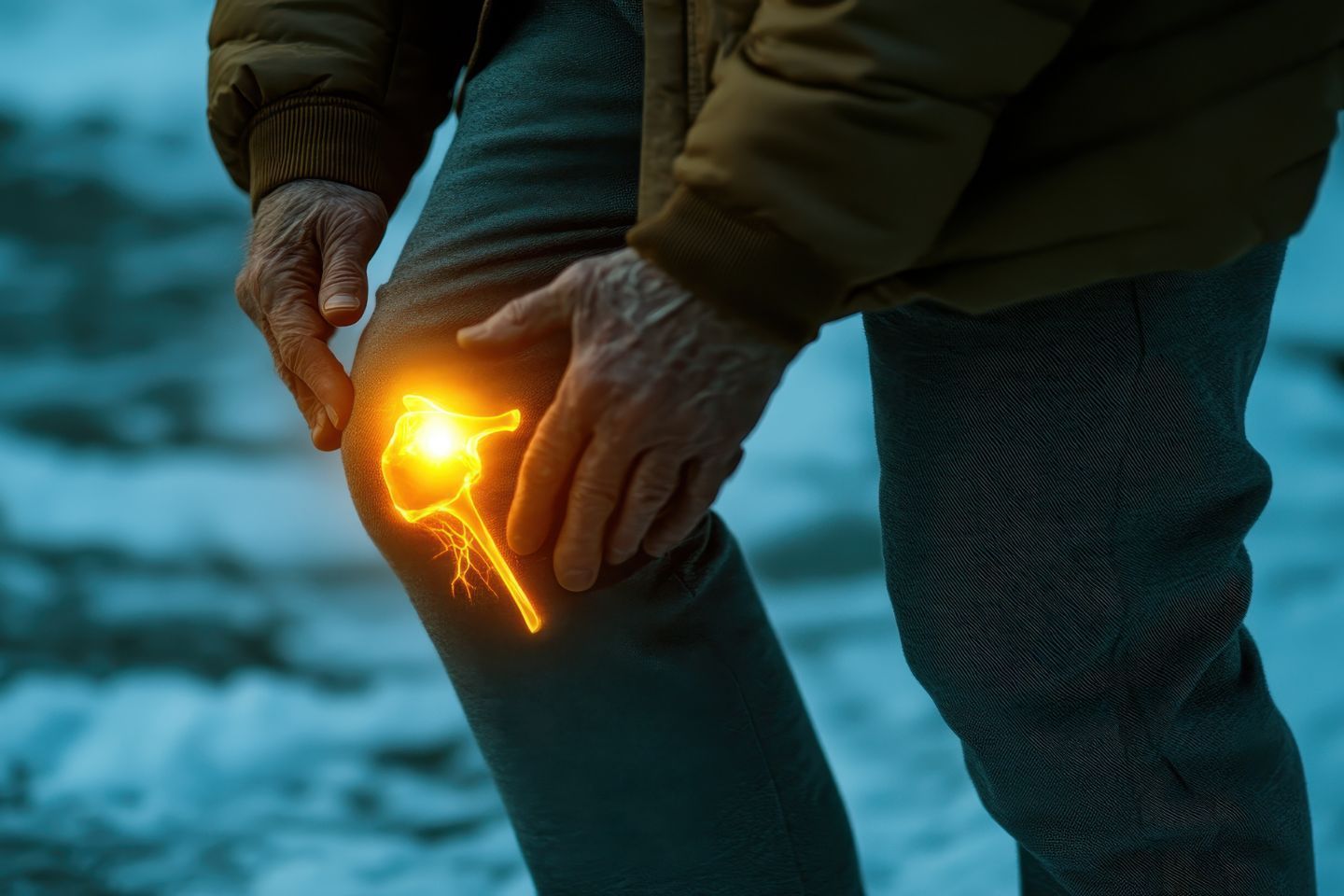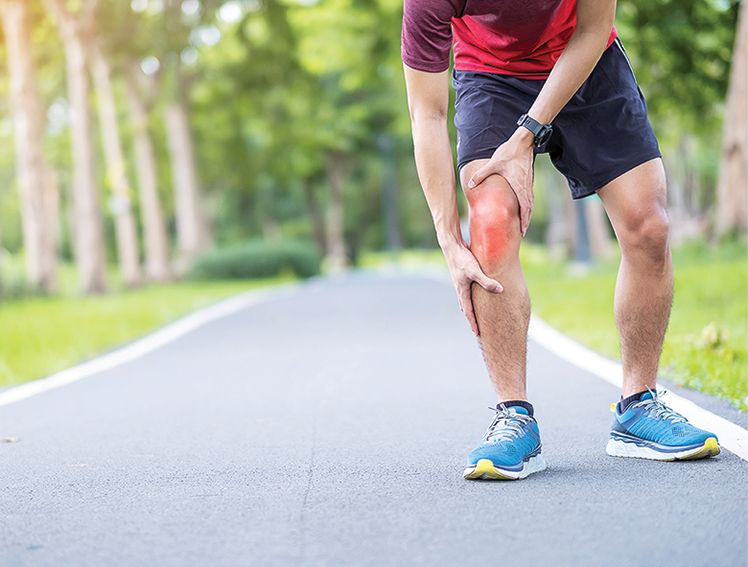
Why Joint Pain Increases in winter and How to Manage It Effectively?
Introduction
Winter is a season many look forward to, with its chilly mornings, cozy sweaters, and warm drinks. However, for those who suffer from joint pain, this season can be particularly challenging. As temperatures drop, joint pain often worsens, making even simple movements uncomfortable.[1] If you’ve noticed your joints aching more during the winter months, you’re not alone. Let’s get into why this happens and what you can do to manage joint pain effectively this winter.
Why Understanding the Cause is Important
Understanding why your joint pain worsens in winter is key to managing it. Knowing the root cause helps you take the right steps to ease discomfort and maintain mobility. Joint pain can limit daily activities, so being proactive can prevent it from taking over your routine. Whether you experience mild stiffness or chronic pain, having the right knowledge empowers you to stay active and comfortable.
Why Joint Pain Increases in Winter
Winter’s cold weather impacts your body in several ways, which can make joint pain worse:
Cold Temperatures Tighten Muscles and Joints: Cold weather causes your muscles and joints to become stiff, making movement more painful. Reduced blood circulation in the cold can also add to this discomfort.
Drop in Barometric Pressure: Changes in atmospheric pressure during winter can cause tissues around the joints to expand, putting more pressure on the nerves and leading to pain.
Less Physical Activity: People tend to stay indoors during winter, which can lead to less movement and more stiffness in the joints. Staying still for long periods makes the pain worse over time.
Increased Sensitivity to Pain: Cold weather often increases sensitivity to pain, especially in those already dealing with arthritis or other joint-related conditions.
Low Vitamin D Levels: Winter brings less sunlight, which can reduce your vitamin D levels. This is important for bone and joint health, and a lack of it can increase discomfort.
How to Manage Joint Pain in Winter Effectively
Managing joint pain in winter requires a mix of lifestyle changes, home remedies, and proper care. Here is what you can do to ease the pain and keep your joints healthy:
Stay Warm:
Dress in layers, put on gloves, and use knee or elbow warmers to stay warm. Keeping your joints warm might help relieve stiffness and soreness.
Stay Active:
Avoid sitting or lying down for long periods. Engage in gentle exercises like walking, stretching, or yoga to keep your joints flexible and improve blood flow.
Hydrate Well:
Winter often makes us forget to drink enough water. Staying hydrated helps keep your joints lubricated, reducing stiffness and pain.
Maintain a Healthy Weight:
Extra weight puts additional strain on your joints. A well-balanced diet and regular physical activity can help you control your weight and alleviate joint stiffness.
Home Remedies and Therapies
Here are some simple therapies you can use at home to reduce joint discomfort:
Warm Compress: Applying a warm compress to painful joints can help improve circulation and relax the muscles. This is especially effective before starting any physical activity.
Gentle Massages: Regularly massaging the affected joints with warm oil can improve blood flow and reduce stiffness.
Epsom Salt Baths: Taking a warm bath with Epsom salt might help reduce joint discomfort and relax muscles.
Stretching Exercises: Gentle stretches keep your joints flexible and reduce stiffness. Start slow and listen to your body to avoid overdoing it.
Use Heat Therapy: Particularly on chilly evenings, a heating pad or hot water bottle can offer immediate pain and stiffness relief.
Medical Treatments for Winter Joint Pain
If your joint pain becomes severe or persistent, consulting a healthcare professional is crucial. Medical treatments may include:
Physical Therapy: A physiotherapist can recommend exercises to strengthen muscles around the joints, improving mobility and reducing pain.
Medications: Over-the-counter or prescribed pain relievers can help manage discomfort. However, always consult your doctor before taking any medication.
Supplements: Supplements like vitamin D and calcium may be suggested to improve bone health and ease joint pain.
Injections: In order to relieve pain and minimize inflammation, doctors may occasionally advise injections.
Preventive Measures for Winter Joint Pain
Prevention is always better than cure. Here are a few steps you can take to avoid winter joint pain altogether:
Stay Consistent with Exercise: Frequent exercise reduces strain by strengthening the muscles surrounding your joints and maintaining their flexibility.
Eat a Balanced Diet: Include foods high in omega-3 fatty acids, calcium, and vitamin D to promote joint health. Leafy greens, nuts, salmon, and fortified foods are excellent choices.
Stretch Daily: Make stretching a part of your morning routine to loosen up stiff joints and prepare them for the day ahead.
Use Joint Support Aids: Knee braces or support bands can provide extra stability and reduce strain on your joints during daily activities.
Avoid Extreme Cold: Stay indoors during particularly cold days and ensure your living spaces are warm and cozy.
Opulent by Meril
The Opulent Knee Replacement Implant is designed to bring comfort and ease to individuals dealing with knee joint issues. This advanced implant ensures smooth movement and long-lasting performance, making everyday activities like walking or climbing stairs more manageable. Its innovative design focuses on reducing pain and restoring mobility, allowing patients to regain their confidence and enjoy an active lifestyle. Whether it's helping with severe arthritis or other knee conditions, Opulent provides a reliable solution for improving joint health.
Conclusion
Winter doesn’t have to mean constant joint pain. By understanding why, the pain worsens in the colder months and taking proactive steps, you can manage your discomfort and enjoy the season. Whether it’s through simple home remedies, medical treatments, or preventive measures, there are plenty of ways to keep your joints healthy.



